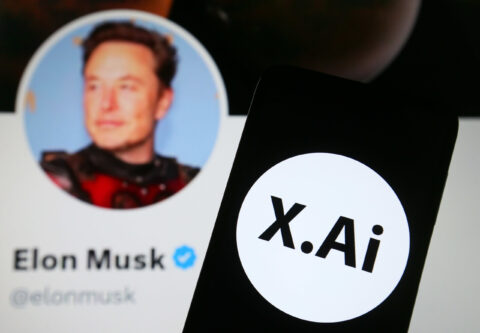Contents
Generative AI Trends refers to artificial intelligence systems that can generate new content and artifacts rather than simply recognizing and classifying information. This emerging technology has seen rapid advances in recent years, fueled by progress in deep learning techniques and large labeled datasets.
Generative AI has the potential to transform many industries and aspects of our lives. Unlike past AI systems focused on analyzing existing data, generative AI can synthesize brand new content that is often indistinguishable from content created by humans. The applications span from creative endeavors like generating music and artwork, to more practical use cases like automating rote content creation. Generative AI is also being applied to drug discovery, materials science, and other technical domains to accelerate innovation.
Generative AI Trends Momentum in 2023
The preceding year witnessed an unprecedented surge in generative AI’s prominence. OpenAI’s ChatGPT revolutionized the domain, swiftly captivating millions of users within days of its launch. This rapid uptake catapulted “AI” into households, accentuating both its possibilities and challenges on a global scale.
While most generative AI models today focus on a single mode like text, image, or audio generation, increasing research is focused on developing multimodal AI systems that can understand and generate content across modalities. This could enable applications like automated video creation and realistic virtual assistants.
Some of the most promising and rapidly evolving types of generative AI include models for generating natural language text, synthesizing audio speech and music, and creating photographic quality images and video. In 2024, we are likely to see significant leaps in the capabilities of these generative models across modalities. This article will highlight five key Generative AI Trends to look for in the coming years that will push generative AI technology forward.
Top 5 Anticipated Generative AI Trends for 2024
In the rapidly evolving landscape of AI, 2024 is projected to be a year of significant advancements and widespread integration. As generative AI becomes more commonplace, enterprises are poised to embrace its potential across various domains. The year ahead forecasts a surge in innovation, steering the course for transformative AI trends.
1. More realistic speech and audio
Text-to-speech synthesis, voice cloning, and AI music composition have all made significant advances in recent years thanks to generative AI models. In 2024, we can expect even more human-like synthesized voices and AI-generated music and audio.
Text-to-speech models like Google’s Tacotron now produce remarkably natural sounding speech. These models have been trained on huge datasets of audio recordings to learn the nuances of human voices and speech patterns. In 2024, expect text-to-speech to become almost indistinguishable from a real human voice.
Voice cloning, or using AI to recreate a person’s voice, has also improved drastically. Companies like Respeecher and Sonantic can clone a voice with just a few minutes of sample audio. As the models improve, cloned voices will be usable for various applications like voice assistants, audiobooks, podcasts, and more.
AI has also shown increasing adeptness at music and audio composition. Models like Anthropic’s Claude can generate original music in different styles and with various instruments. These models have been trained on large datasets of existing songs and instrument audio. In 2024, AI music composition will advance to the point where computer-generated tunes and audio will be commercially viable for media applications.
Overall, thanks to massive datasets and advances in deep learning, AI speech and audio synthesis is rapidly approaching human parity. In 2024, expect generated voices, music, and other audio that is indistinguishable from the real thing.
2. Video generation
Recent advances in AI video synthesis, also known as deepfakes, allow for the creation of increasingly realistic fake videos. Instead of simply overlaying one person’s face onto another, AI can now generate completely artificial video content from scratch.
For example, some companies have developed AI systems that create photo-realistic digital humans. These virtual avatars look and move like real people, with natural facial expressions and body language. The AI fills in all the subtle details that make computer-generated humans appear authentic.
These virtual avatars can then be placed into any video background. They can even be programmed to speak in a lifelike synthesized voice matched to their appearance and mannerisms. The resulting videos can potentially be indistinguishable from real footage.
In the near future, AI video generation may advance to allow custom avatars based on any person’s image or likeness. Instead of hiring actors, video creators could license an AI to synthesize custom virtual actors for any script or scenario. This raises concerns around consent and misuse.
Some predict these AI avatars may become virtual stand-ins for public figures or be used to generate false government broadcasts and fake news. But they could also usher in promising creative applications in gaming, film, and emerging virtual and augmented reality experiences.
Regulating and monitoring deepfake capabilities remains an ongoing challenge. But the pace of progress in AI video synthesis suggests this technology will continue rapidly advancing in 2024 and beyond.
3. Multimodal AI
One exciting development we can expect to see more of in 2024 is multimodal AI – artificial intelligence that can generate content across different mediums like text, images, audio and video. So far, most Generative AI Trends models have focused on a single modality, like DALL-E for images or GPT for text. But multimodal AI aims to combine these capabilities, enabling AI systems to generate coherent, realistic content in multiple formats at once.
For example, Anthropic is working on an AI system called Claude that can not only write text, but also generate corresponding images to illustrate the text. This could significantly enhance applications like automated content creation, where the AI can whip up an entire article with custom images, saving humans time and effort. Microsoft and other tech companies are also exploring AI that can synthesize speech, synchronize lip movements in video, and transcribe audio.
Multimodal AI opens up new creative possibilities for generative content. Instead of developing separate text and image algorithms, multimodal AI can learn associations between modalities and generate multidimensional content as a cohesive narrative. This also leads to outputs that are more contextual, nuanced and integrated compared to single-modality generation. However, multimodal AI poses challenges around bias, fairness and truthful generation that will need to be navigated thoughtfully. Overall, the progress in multimodal Generative AI Trends presents intriguing opportunities for creation and consumption of immersive, multimedia content.
4. Faster model training
In 2024, expect continued progress in developing techniques to train large AI models more quickly and efficiently. One important approach is model pruning, where unnecessary parameters are removed from a neural network model without significantly hurting its performance.
Pruning reduces the model’s size, making it easier to run on more limited compute resources. Researchers have developed methods to automatically identify and remove redundant or non-critical parts of a model. This allows the overall training process to be accelerated, as less computation is required for the stripped-down model.
Other promising techniques include knowledge distillation, where a smaller “student” model is trained to mimic an already trained larger “teacher” model. The student mirrors the teacher’s capabilities while requiring fewer resources to train. There are also innovations in model parallelism and distributed training across clusters of hardware to divide up work.
As model sizes continue to increase in pursuit of greater capabilities, reducing the computational budget and time required to train them will remain an active research area. Expect new papers and methods that allow leading AI labs to train models with trillions of parameters in days or weeks rather than months or years. More efficient training will democratize access to large models, enabling their benefits to reach more users and applications.
5. Specialized generative models
Generative AI models that are specialized for particular domains and applications will continue to emerge and improve. As these models are trained on more domain-specific data, they are able to generate higher quality outputs in specialized areas like:
- Medicine – AI models can now generate synthetic patient data for research, training, and testing. Models can also suggest potential diagnoses and treatment plans based on patient symptoms and medical history.
- Science – Models are being developed that can read research papers and generate summaries, highlight key findings, and even suggest new hypotheses and experiments. This can accelerate scientific research and discovery.
- Engineering – Generative design models can suggest novel component shapes and configurations to meet engineering goals. This can enhance ideation and optimize designs in areas like architecture, manufacturing, and more.
- Creative fields – Models focused on music, visual art, writing, and more can assist human creatives and artists with ideation, iteration, and new perspectives.
As data and computing power increases, we’ll see more capabilities emerge from generative AI specialized for nearly every industry and domain. This will enable more uses that take advantage of AI’s unique strengths.
Concerns around misuse Of Generative AI Trends
Generative AI has incredible potential, but it also raises important concerns we must thoughtfully address. As these AI systems become more advanced and accessible, there is increased risk of malicious use to generate convincing fake content.
Deepfakes are already being used to create nonconsensual explicit videos and audio of people. More advanced Generative AI Trendssystems could allow bad actors to impersonate others or spread misinformation at scale. This underscores the need for heightened vigilance and safeguards.
Companies developing these AI systems have a responsibility to implement principles of ethical and trustworthy AI. They should carefully consider potential harms and build in mitigations to prevent abuse, such as watermarking AI-generated content. Ongoing research into techniques to detect fake media will also be important.
There is a role for regulation as well. Governments around the world are evaluating policies to balance innovation and responsible use of AI. For example, the European Union is considering requiring disclosure when media is AI-generated.
As generative AI advances, we must thoughtfully address dangers and work to maximize societal benefit. With care, foresight and collective responsibility, these technologies can empower creativity and progress while minimizing risks.
Regulatory Discussions Around AI Technology
Governments around the world are taking notice of the rapid advances in generative AI and beginning to investigate regulatory frameworks. There is growing concern around potential misuse, like the generative AI Trends of misinformation or harmful content. However, regulating AI is a complex challenge given the fast pace of technological change.
In 2023, the US, UK, EU, and other countries began exploring possible regulatory approaches. The key questions under discussion include:
- Should certain uses of generative AI be restricted or banned entirely? For example, synthesizing media of real people without consent.
- How can we balance innovation in AI with other priorities like truth, safety, and fairness?
- Who should oversee and enforce regulations – individual tech companies, or governmental bodies?
- How can regulations be designed to allow room for ongoing AI progress?
- Should generative AI systems be required to label synthesized content as artificial?
- Should there be laws requiring human review before publishing AI-generated content, to catch potential errors or misinformation?
By 2024, we may start to see initial regulations proposed and enacted, like requirements for transparency around AI content. However, regulating Generative AI TrendsI poses an immense challenge. Thoughtful, nuanced policies will be needed that allow us to steer the technology responsibly without stifling continued progress. The debates are just beginning on what legislative approaches make the most sense.
Conclusion
2024 will be an exciting year for generative AI, building upon the rapid advancements made in 2022-2023. As discussed, we can expect to see major improvements in areas like speech, video, and multimodal AI that will make generative content feel more natural and realistic. Democratization of AI will also continue, allowing more people to access and utilize these powerful models.
While risks of misuse exist, the technology will likely be an incredible tool for creativity, efficiency, and knowledge sharing if wielded responsibly. Clear regulatory guidance around appropriate use cases is still needed, and will require ongoing discussions between tech companies, governments, and civil society groups.
Overall, Generative AI Trends remains one of the most transformative technologies on the horizon. The capabilities expected in 2024 represent just the beginning of realizing its full potential. If we build and guide these AI systems thoughtfully, they could open up amazing new possibilities in how we communicate, learn, and create. The next few years will set the stage for what future generations might be able to achieve with increasingly advanced and beneficial AI.








